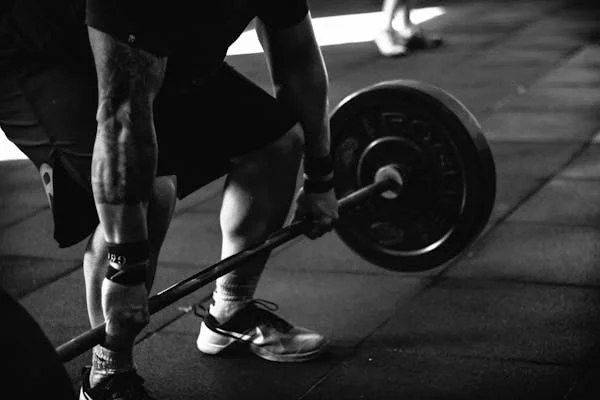It’s a fact that time is of the essence for everyone these days. It seems like there are never enough hours in the day with work, family, and attempting to maintain some sort of social life. Therefore, you want to be sure you’re getting the most out of your exercise time when you do dedicate that valuable thirty minutes. So which should you prioritize, weight training or cardio? There are ardent supporters on both sides of this age-old argument. We’ll examine the benefits and drawbacks of each in this post to assist you in selecting the optimal option for a time crunch.

Let’s talk about cardio or weight training and all the aspects:
Advantages of cardio:
Cardio exercises are well known for their capacity to raise and maintain heart rate. The goal of this kind of exercise is to force your lungs to work hard and your blood to pump.
Heart Health: Cardiovascular exercise can help lower the risk of heart disease and strengthen your heart.
Cardio is a highly effective means of burning calories. Engaging in physical activities such as running, cycling, and rowing can burn a substantial amount of calories quickly.
Endurance: Cardio can gradually increase your stamina, which will make daily tasks feel simpler.
Mood Enhancer: Are you familiar with the “runner’s high”? Cardio produces endorphins, which have the ability to elevate your mood and lessen stress.
Drawbacks with Cardio
It’s not all sunshine and rainbows, of course.
Gaining too much muscle, especially in the absence of strength training, might result in muscle loss.
Impact Damage: Running and other high-impact aerobic exercises can be very hard on your joints.
Time-consuming: While HIIT (High-Intensity Interval Training) sessions are brief, regular cardio may take a lot of time if you want to see noticeable improvements.
Weightlifting: Putting in the Work to Get Results
Advantages of Lifting Weights
Conversely, weight training emphasizes the development of muscle through resistance training. Exercises like these, whether you use resistance bands, dumbbells, or just your body weight, have some really beneficial effects.

Muscle Growth: The best method for gaining and preserving muscle mass is weight training.
Increased Resting Metabolic Rate: Having more muscle increases your resting metabolic rate, which increases your calorie burning even when you’re not exercising.
Bone Health: Increasing weight helps build stronger bones and lowers the chance of osteoporosis.
Functional Strength: Lifting weights increases your total strength, which lowers your risk of injury and facilitates daily duties.
Drawbacks to Lifting Weights
However, there are certain drawbacks to weight training.
Learning Curve: It can take some time to master proper form, which is essential to preventing injuries.
Many find they need weights or equipment for workouts, despite bodyweight options.
Muscle soreness is a common side effect of weight training that might be a deal-breaker for some.
Which Thumbs Out in the Time Crunch?
Deciding on cardio or weight training is crucial when time is limited. Consider these key factors.
Rapid Cardio Exercises
You’re in luck if your fitness preference is cardio. You can work out quickly and efficiently in many different ways.
When time is of the essence, High-Intensity Interval Training, or HIIT, is ideal. These exercises consist of quick bursts of vigorous activity interspersed with short rest intervals. A good workout can be completed in 20 to 30 minutes.
Jump Rope: This beloved exercise from childhood is actually quite effective. Thirty minutes of jogging burn twice as many calories as 10 minutes.
Stair Climbing: Locate a set of stairs and spend 15 to 20 minutes climbing and descending.
Fast Weight Training Routines
If you’re more interested in gaining muscle, there are effective ways to fit in a fantastic weight training session.
Compound Movements: You get more value for your money when you perform exercises like squats, deadlifts, and bench presses since they work many muscle groups simultaneously.
Supersets: Exercises should be paired and performed without a break in between. This increases the intensity of your workout and keeps your heart rate elevated.
Circuits Using Bodyweight: Not a single weight? Not an issue. Spend 20 to 30 minutes performing a circuit of push-ups, pull-ups, squats, and lunges to engage your entire body.
Blending Strength and Cardio Exercises:
The Finest of Both Worlds
When you can have both, why choose just one? You may get more out of your limited time and have a well-rounded exercise program by combining aerobics with weight training.
Circuit training entails performing a sequence of cardio or weight training with little to no rest. For instance, you could perform jumping jacks for thirty seconds, then push-ups for thirty seconds, burpees for thirty seconds, and so on.
HIIT with Weights: Use weights as part of your HIIT exercise. Try dumbbell snatches, weighted squats, and kettlebell swings.
Hybrid programs: Similar to CrossFit or boot camp, several gyms have programs that blend strength and aerobic training.
An Example of a 30-Minute Exercise:
This 30-minute routine, which incorporates both cardio and weight training, is short and efficient:
5 minutes of light running or jumping jacks is the warm-up.
Circuit: Kettlebell swings for one minute
Burpees for one minute
Push-ups for one minute
Jump squats for one minute
Mountain climbers for one minute
Circuit Repetition: Perform the circuit three times with little to no break in between.
Stretching for five minutes to cool down.
FAQs:
What if my workouts are limited to fifteen minutes?
Not a problem! Concentrate on doing high-intensity workouts that hit several different muscle groups. Compound movement circuits or brief HIIT sessions can be quite beneficial.
Should I start with weights or cardio first?
It is dependent on your objectives. Lift weights initially if gaining muscle is your main objective. If your primary concern is your cardiovascular health, start there.
Can I complete both in one day?
Of course! Just be careful to control the amount and intensity to prevent overtraining.
On what days of the week should I exercise?
To achieve balance, do both cardio and weight training at least three days a week.
Conclusion:
The workout you actually complete is the best one when time is limited. Cardio or weight training each offers special advantages and may be adapted to fit into even the busiest schedules. The secret is consistency, regardless of whether you choose a brief HIIT session, a complex weight circuit, or a combination of the two. Put on your sneakers, pick up some weights, and move because every minute matters!
You can choose the best fitness regimen for you if you are aware of the advantages and disadvantages of both weight training and aerobic exercise. Ultimately, the key to remaining healthy and active even when time is limited is figuring out a balance that suits your goals and lifestyle.


